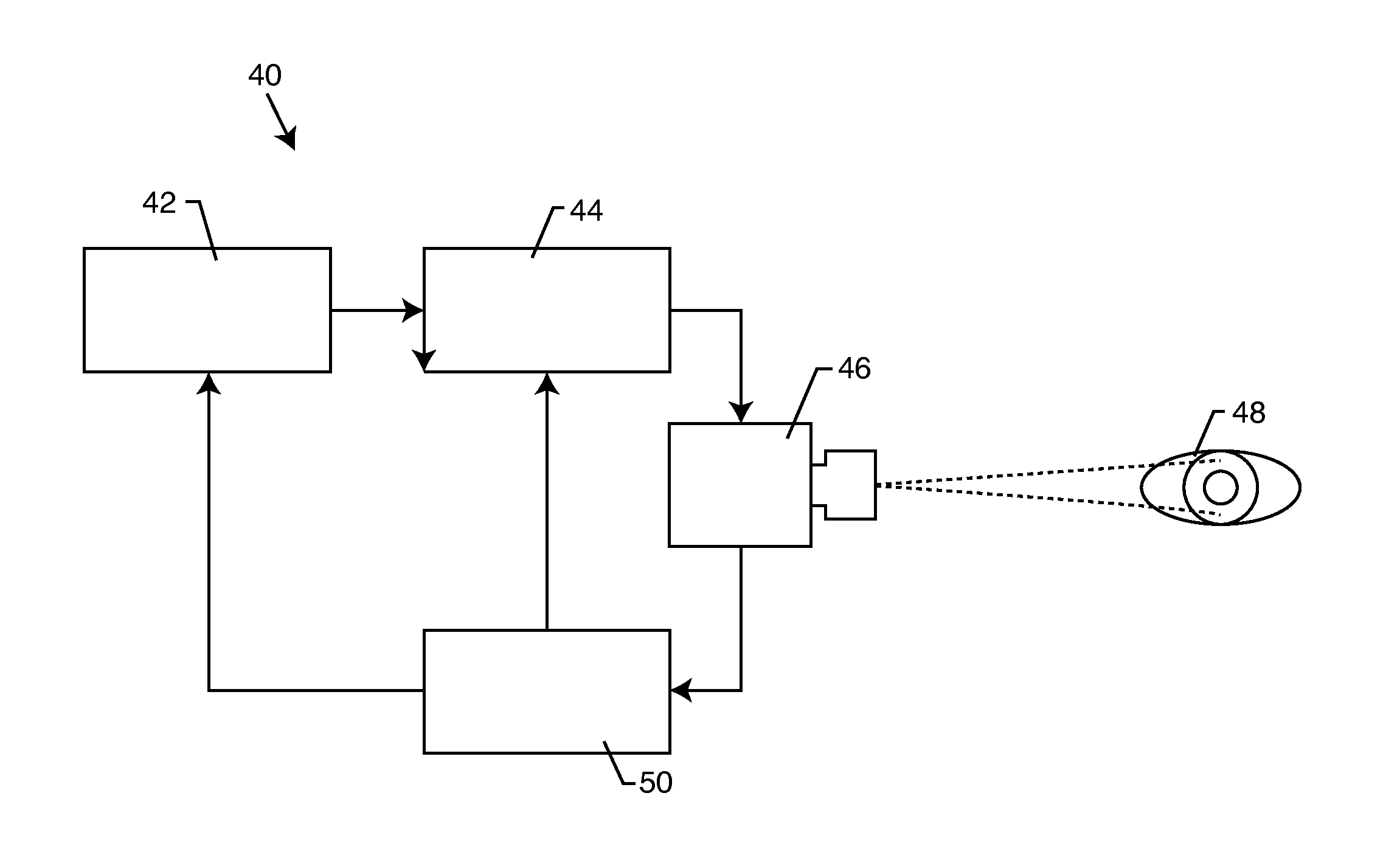System and process for retina phototherapy
a retinal phototherapy and system technology, applied in the field of biological tissue phototherapy, can solve the problems of a 32% risk of potentially disabling moderate visual loss, clinically significant diabetic macular edema, and generally no effective treatment for diabetic retinopathy, so as to avoid tissue damage
- Summary
- Abstract
- Description
- Claims
- Application Information
AI Technical Summary
Benefits of technology
Problems solved by technology
Method used
Image
Examples
Embodiment Construction
[0032]The present invention relates to a system and process for treating retinal diseases, including vascular retinal diseases such as diabetic retinopathy and diabetic macular edema, by means of predetermined parameters producing harmless, true subthreshold photocoagulation. The inventor's finding that retinal laser treatment that does not cause any laser-induced retinal damage, but can be at least as effective as conventional retinal photocoagulation is contrary to conventional thinking and practice.
[0033]Conventional thinking assumes that the physician must intentionally create retinal damage as a prerequisite to therapeutically effective treatment. With reference to FIG. 2, FIGS. 2A-2F are graphic representations of the effective surface area of various modes of retinal laser treatment for retinal vascular disease. The gray background represents the retina 30 which is unaffected by the laser treatment. The black areas 32 are areas of the retina which are destroyed by conventiona...
PUM
 Login to View More
Login to View More Abstract
Description
Claims
Application Information
 Login to View More
Login to View More - R&D
- Intellectual Property
- Life Sciences
- Materials
- Tech Scout
- Unparalleled Data Quality
- Higher Quality Content
- 60% Fewer Hallucinations
Browse by: Latest US Patents, China's latest patents, Technical Efficacy Thesaurus, Application Domain, Technology Topic, Popular Technical Reports.
© 2025 PatSnap. All rights reserved.Legal|Privacy policy|Modern Slavery Act Transparency Statement|Sitemap|About US| Contact US: help@patsnap.com



